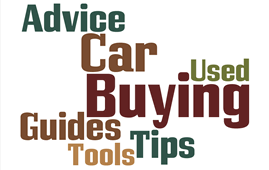How to Do a Proper Test Drive

The best course of action is to devise a checklist of criteria to be covered both before and during the test drive, and then cross the items off one by one, making any necessary notes along the way. As well, you should plan your own driving route to take ahead of time, and not simply drive around the dealership's neighborhood at the salesperson's direction. You should either drive your actual residential and highway routes taken each day, or follow a route that provides a similar driving environment.
Before driving the vehicle, inspect its exterior for damage or irregularities in paint or assembly. A new car should be free of any imperfections. When a used vehicle is in question, examine it just as thoroughly and record any obvious concerns such as evidence of an accident, repainting, or excessive rust on the paneling, welds, and underbody. Of course, a certain degree of wear and tear is to be expected on a used car but limits should be put on just how much is acceptable depending on the model year. Regardless of appearance, a mechanic independent of the dealership should inspect a used vehicle both mechanically and physically for soundness before the purchase.
If possible, all family members and those who will be driving the vehicle should be present at the test drive. It is very important that everyone is comfortable with the positioning of the controls and seats, proper visibility, and overall feel of the vehicle. When children will be passengers, parents should note if there is enough room for them to travel comfortably, and that the seatbelts can be fitted correctly. Actually load the children into the car and buckle them up.
Everyone should be encouraged to use the controls and accessories to ensure that they are easily accessed and that drivers will not be forced to take their eyes off the road to search for them. Also take time to analyze luggage space and make sure that everyday items such as sports equipment and baby gear can fit in the trunk. Lower lifts gates have a definite advantage in this respect. As well, it's a good idea for you to take a tape measure along with a list of measurements for these items if they cannot be brought to the test drive.
Once this portion of the checklist is complete and the passengers are loaded into the vehicle, the salesperson should be asked to explain any features and benefits before taking the test drive so as to avoid causing any distraction. To this point, children should be left behind at the dealership with a parent or adult family member, as they tend to become restless and noisy. You should be concentrating only on the sound of the engine, overall performance of the vehicle, and the other traffic and signal lights around you.
If the vehicle is used, it is especially important not let the salesperson turn up the radio or talk incessantly, as they may be trying to distract the you or cover up suspicious and excessive engine noises. At some point, drive with both the windows up and down to listen to the car more thoroughly.
On the drive, you should take note of the vehicle's performance on a variety of road conditions such as gravel, pavement, residential streets, and highways. For trucks and SUV's, go to an area where the four-wheel drive can be tested out. Take the vehicle up hills and around corners, listening to the engine's response and how quickly and smoothly the transmission shifts. Merge onto the highway and gauge how well it accelerates and maneuvers into traffic, especially if the air conditioning is on which can cause a vehicle to lose power.
In a controlled setting like a dead-end rural road or vacant parking lot, put the vehicle through rigorous braking tests from light braking to sudden, emergency-type braking combined with an evasive tactic. Note the performance of a vehicle equipped with ABS brakes, and try the sudden braking test several times to get acquainted with the pulsing sensation on the brake pedal. Scrutinize all of these criteria carefully, as well as the overall stability, handling, and feel.
Upon arriving back at the dealership, you should attempt several different parking procedures to determine blind spots and any difficulties in maneuverability. Try parallel parking, backing into a space between two other cars, and driving forwards into a spot from the left and from the right.
Everyone should take one last hard look at the vehicle, and make sure it is the style and color that suits the majority of people that will be using it, and that there are no unanswered questions or concerns. Buying a car is generally the second largest purchase a person will ever make after a house, so you should spend a great deal of time ensuring that not only the price and paperwork are both accurate and satisfactory, but that the car itself is ideal as well.

